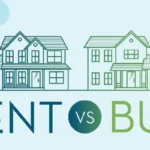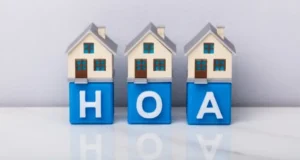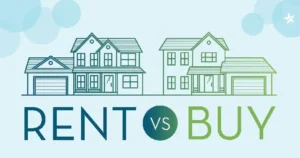Imagine returning home to find extensive water damage or a break-in that leaves your personal belongings missing.
Without homeowners insurance—often called home insurance or house insurance—you’d face steep repair or replacement costs on your own.
A good policy provides a financial safety net, protecting both your property and your assets if someone holds you responsible for an injury on your premises.
In this guide, you’ll learn what homeowners insurance covers, how it works, the different policy types (HO-1 through HO-8), and how to choose the best policy for your situation.
What Is Homeowners Insurance?
Homeowners insurance is a package policy that typically combines multiple forms of coverage. These include:
- Property Protection (for your home’s structure, other structures, and personal belongings)
- Liability Protection (for injury or damage claims against you)
- Additional Living Expenses (if a covered loss forces you out of your home temporarily)
Fun Fact: According to the Insurance Information Institute (III), around 95% of homeowners carry some form of home insurance, which is often required by mortgage lenders.
What Does Homeowners Insurance Cover?
(Targeted for a Featured Paragraph Snippet)
A standard homeowners insurance policy usually covers:
- Dwelling Coverage: Protects the main structure of your home—walls, roof, floors, and any built-in appliances—against specified perils like fire, windstorms, hail, lightning, and vandalism.
- Other Structures Coverage: Extends to detached structures on your property such as sheds, fences, or detached garages. It’s typically set at 10% of your dwelling coverage limit.
- Personal Property Coverage: Covers your personal belongings, like furniture, clothing, and electronics, whether they’re damaged or stolen at home or (often) even away from home. Standard coverage often ranges from 50% to 70% of your dwelling limit.
- Loss of Use (Additional Living Expenses) Coverage: Helps pay for temporary housing, meals, or pet boarding if you must vacate your home after a covered event, such as a fire.
- Personal Liability Coverage: Pays for legal fees, court awards, and settlements if you’re legally responsible for injuries or property damage. Limits often start at $100,000 but can be increased.
- Medical Payments Coverage: Covers minor medical expenses for guests injured on your property, regardless of who is at fault.
What Does Homeowners Insurance Not Cover?
Despite its broad protection, standard policies typically exclude:
- Flood Damage – Requires separate flood insurance (often via the National Flood Insurance Program (NFIP)).
- Earthquake Damage – Requires an earthquake endorsement or separate policy, commonly purchased in high-risk areas like California.
- Sewer or Water Backup – Usually not covered unless you add a Water Backup Endorsement.
- Wear and Tear or Poor Maintenance – Gradual damage, like a slow leak causing mold, isn’t covered.
- Pest Infestations – Termite or rodent damage falls under homeowner maintenance.
- High-Value Items Above Policy Limits – Jewelry, fine art, and collectibles may need a Scheduled Personal Property endorsement.
Types of Homeowners Insurance Policies (HO-1 Through HO-8)
Below is a comparative overview of the main homeowners insurance policy types. Exact coverage varies by insurer and state.
| Policy Type | Coverage Level | Common Uses |
|---|---|---|
| HO-1 (Basic Form) | Covers a limited set of named perils (e.g., fire, theft) | Rarely sold today due to minimal coverage |
| HO-2 (Broad Form) | Covers more named perils (falling objects, etc.) | Budget-friendly but narrower coverage than HO-3 |
| HO-3 (Special Form) | Most common; covers dwelling on an open-peril basis, personal property on named-peril basis | Standard single-family homes |
| HO-4 (Tenant’s Form) | Renters insurance, no dwelling coverage | For renters |
| HO-5 (Comprehensive Form) | Dwelling and personal property covered on an open-peril basis | Higher-value or newer homes |
| HO-6 (Condo Form) | Covers personal property and interior walls | Condominium owners |
| HO-7 (Mobile Home Form) | Similar to HO-3 but specifically for mobile or manufactured homes | Manufactured and mobile home owners |
| HO-8 (Modified Coverage Form) | Named-peril coverage tailored for older or historic homes | Homes where replacement costs may exceed market value |
Common Homeowners Insurance Endorsements
Endorsements (also called “riders” or “floaters”) enhance or modify your policy. Popular options include:
- Water Backup Coverage – Covers damage from sewer or drain backups, which are not typically included in standard policies.
- Scheduled Personal Property – Increases coverage limits for high-value items such as engagement rings, art, or rare collectibles.
- Ordinance or Law Coverage – Pays extra rebuilding costs to meet updated building codes after a covered loss.
- Identity Theft Coverage – Assists with legal fees or other costs if your identity is stolen.
- Green Home Coverage – Helps upgrade to eco-friendly materials after a covered loss.
How Much Homeowners Insurance Do I Need?
Determining coverage involves:
- Dwelling Coverage: Insure your home for its replacement cost, i.e., the amount it would take to rebuild entirely (not its real estate market value).
- Personal Property: 50%–70% of your dwelling coverage is typical, but inventory your belongings and insure high-value items separately if needed.
- Liability Coverage: Start at $300,000 if you have substantial assets. Consider an umbrella policy for additional protection.
- Loss of Use: Usually 20% of your dwelling coverage, but ensure it would cover living expenses if you’re displaced for weeks or months.
Expert Tip: “One of the biggest mistakes homeowners make is underestimating the replacement cost of their property,” says John Smith, a licensed insurance agent at Smith & Associates. “Always factor in rising construction and labor costs.”
How to Choose the Right Deductible
Your deductible is what you pay out of pocket before insurance kicks in. Higher deductibles can lower your premium, but you’ll assume more risk in a claim. For instance, raising your deductible from $500 to $1,000 might save 10%–15% on your annual premium. However, be sure you have enough savings to cover that higher deductible if disaster strikes.
What Factors Affect Homeowners Insurance Premiums?
Your homeowners insurance cost isn’t solely about coverage limits. Insurers also look at:
- Location – Homes in hurricane-prone coastal regions (e.g., Florida) or areas with high crime rates often have higher premiums.
- Home Age and Condition – Older homes may have outdated wiring or plumbing, increasing the risk of accidents.
- Roof Condition – A new roof can yield lower rates.
- Claims History – Multiple past claims can raise your premium.
- Credit-Based Insurance Score – In many states, a better credit score could mean lower premiums.
- Safety and Security Features – Smoke alarms, security systems, and storm shutters often qualify for discounts.
How Do You File a Homeowners Insurance Claim?
- Contact Your Insurer Immediately – Call your insurance provider’s claims department or file online through their portal.
- Document the Damage – Take photos or videos and note the date and time of the incident. Keep receipts of any emergency repairs.
- Secure Your Property – Prevent further damage (e.g., tarp a broken roof).
- Meet With the Adjuster – The insurance company will send an adjuster to assess the damage. Provide all documentation.
- Review the Claim Settlement – The insurer will calculate the settlement based on your coverage terms (actual cash value vs. replacement cost).
- Complete Repairs – Hire licensed contractors and keep all invoices.
- Follow Up – Stay in touch with your insurance agent to confirm everything proceeds smoothly.
How to Save on Homeowners Insurance
- Compare Quotes – Shop around with multiple insurers or use online comparison tools.
- Bundle Policies – Combine home and auto insurance for discounts ranging from 5%–20%.
- Increase Your Deductible – Opt for a $1,000 deductible instead of $500 to lower premiums.
- Install Safety Devices – Smoke detectors, security systems, and deadbolt locks can lead to discounts.
- Maintain Good Credit – Pay bills on time and keep credit card balances low.
- Look for Specialized Discounts – Ask about senior, military, or loyalty discounts.
- Perform Regular Maintenance – A well-maintained property faces fewer risks, potentially lowering long-term costs.
Average Homeowners Insurance Premiums by State
While individual rates vary based on many factors, the table below (from the National Association of Insurance Commissioners (NAIC)) shows average annual premiums by state in 2024:
| State | Average Annual Premium |
|---|---|
| Oklahoma | $3,722 |
| Nebraska | $3,593 |
| Kansas | $3,524 |
| Arkansas | $3,455 |
| Iowa | $3,446 |
Pro Tip: If you live in high-cost states, consider higher deductibles or additional safety measures to reduce your premium.
Best Homeowners Insurance Companies in the U.S.
While “best” can vary by individual needs, these companies often rank highly for customer satisfaction and claims handling:
- State Farm – Known for extensive local agent network.
- Allstate – Offers numerous discounts and digital tools.
- USAA – Highly rated for military members and veterans.
- Liberty Mutual – Features customizable coverage options and savings.
- Travelers – Competitive rates and strong coverage endorsements.
Always read reviews, compare coverages, and request detailed quotes before deciding.
FAQs
- Is homeowners insurance required by law?
No, but most mortgage lenders require it. Even without a mortgage, carrying coverage is wise to protect your largest investment. - How is actual cash value different from replacement cost?
Actual Cash Value (ACV): Pays for damage after subtracting depreciation.
Replacement Cost: Pays what it takes to buy a new item of similar quality, without depreciation. - Does homeowners insurance cover home-based businesses?
Generally, no. You may need a separate business or commercial policy endorsement. - Will my policy cover a stolen laptop outside of my home?
In many cases, yes. Most policies include off-premises coverage for personal property, often limited to 10% of your personal property coverage. - How often should I update my policy?
Review it annually or after major changes, like renovations or significant purchases.
Bottom Line
Homeowners insurance acts as a financial shield, allowing you to recover more easily from unforeseen perils such as storms, theft, or lawsuits.
By tailoring a policy that matches your home’s replacement value, personal property needs, and liability exposures, you ensure peace of mind.
Understanding endorsements can close gaps that standard policies don’t address, and periodic policy reviews help keep your coverage current.
Additionally, adopting security measures and comparing quotes from reputable insurers can lead to substantial premium savings. In the long run, investing time and attention into homeowners insurance is one of the most responsible decisions you can make.
















